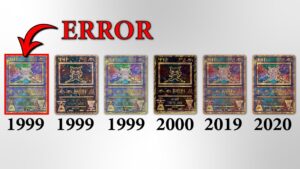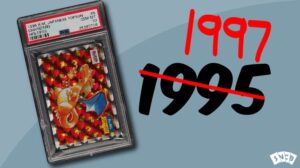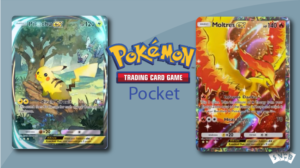Repairing Damaged Pokémon Cards (Guide)
-
By: Oliver Copeland
- Published:
- Last Updated: December 3, 2023
I’m not going to waste your time. In most cases, damage to trading cards cannot be fixed. When it comes to Pokémon cards, condition is everything, and could even be the difference between a $100 card and a $1,000,000 card. Collectors, graders, and buyers are all going to go over cards in great detail, looking for any signs of wear and tear. In this article we’ll look at all kinds of damage that a card can attain, and which kinds can be fixed.
Part I: Repairable Damage
- Warping (also known as bending, curving)
- Dirt
Warping
Some foil cards will bend or curve if left out unprotected. We have a whole article on how and why this happens, but the short version is that the card absorbs moisture, and that’s why it curves.
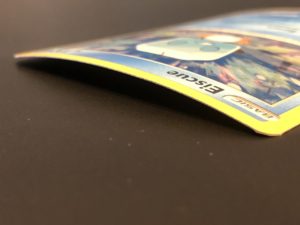
Luckily, this isn’t considered damaged, since it can be fixed. Furthermore, you can send a warped card to get graded and it won’t receive any negative points against the grade. The card will be flat inside the case when returned. A curved card can still receive a 10.
How to fix it
It’s easy, just sleeve the card and place it inside a thick book. Then, stack some heavy objects on top and leave it for 48 hours. If the card still has a curve after this time, try again.
Dirt
Some cards get dirty. This is most common when digging up the old collection that you used to haul around the playground.
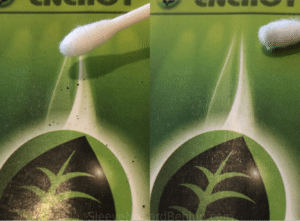
Generally, it’s not recommended to clean a card if it doesn’t need it. Specs of dirt or grime stuck to a card should be cleaned at your own risk, but you don’t need to clean a card before grading “just because”.
How to fix it
It is possible to clean a Pokémon card without damaging it. For a full tutorial, click here.
The short version: Collect some cotton swabs and a small cup of water. Very lightly dab the cotton swab in the water, soaking up just a little bit. Then, very lightly apply the swab to the dirt on the card, moving the swab in a rotating motion. The dirt will eventually loosen up and lift from the card.
Part II: Non-Repairable Damage
- Creases
- Whitening
- Edge wear
- Impressions
- Scratches
- Dings
- Cuts
- Delamination (front or back peeling)
- Sun bleach
- Water damage
- Tears
If damage could be fixed, then mint condition cards wouldn’t be worth so much. The reason that a PSA 10 Charizard is worth so much money is that most of them have been damaged over the past 20+ years.
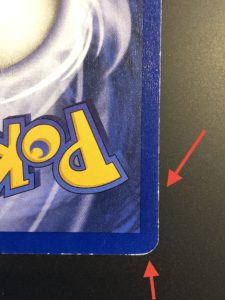
There are ways to fix some of what’s listed above, but not in a professional way, and it will hurt the value of your card.
Graders inspect cards very closely and have many tools to detect damage that’s not detectable to our naked eye. If you can fix a crease, scratch, or edge wear, they will know.
It can be a tough pill to swallow, but it might be time to buy a new card and protect it from any future damage.
Part III: Preventative Practices
It’s common knowledge these days to sleeve your cards, unlike in the late 90s when an elastic band was all we used before stuffing it into our jean pockets.
However, many people still don’t sleeve their cards. It is the number one, easiest way to protect a card. But, there are other options too.
- Inner sleeves Link to Amazon
- Sleeves Link to Amazon
- Rigid sleeves (top loaders) Link to Amazon
- Semi-rigid sleeves (card savers) Link to Amazon
- One-touch cases Link to Amazon
- Binders Link to Amazon
- Grading services
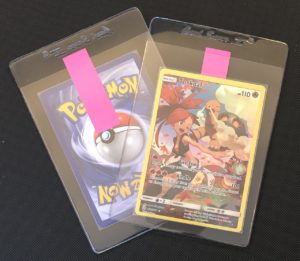
Final Thoughts
I get it. Your card got damaged and it sucks. I actually have a Latios star in my collection that I played with when I was a kid. Today a PSA 10 is worth over 5 figures, but mine would probably receive a 4 or 5.
It’s just the way of life for a Pokémon card and damaged cards are actually what drives the price behind mint cards.

Hi, I'm Oliver. I've been collecting Pokémon cards for 25+ years. I hope you enjoyed your read and learned something. Learn more about me on the About page.

